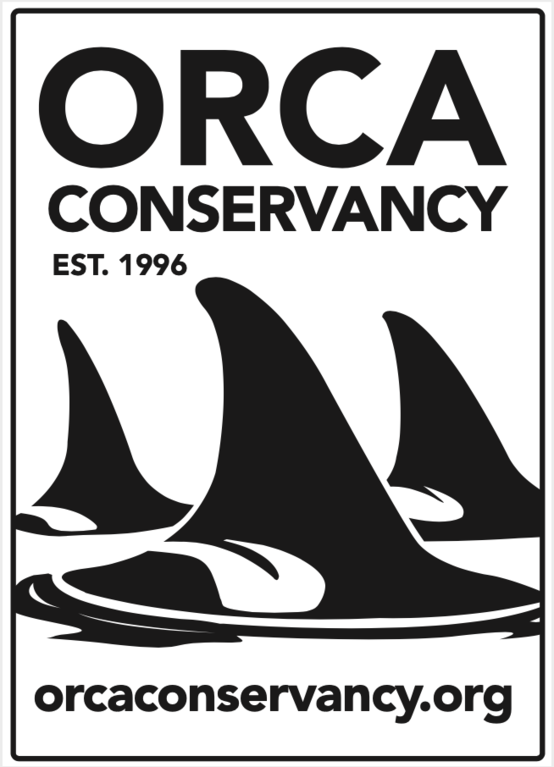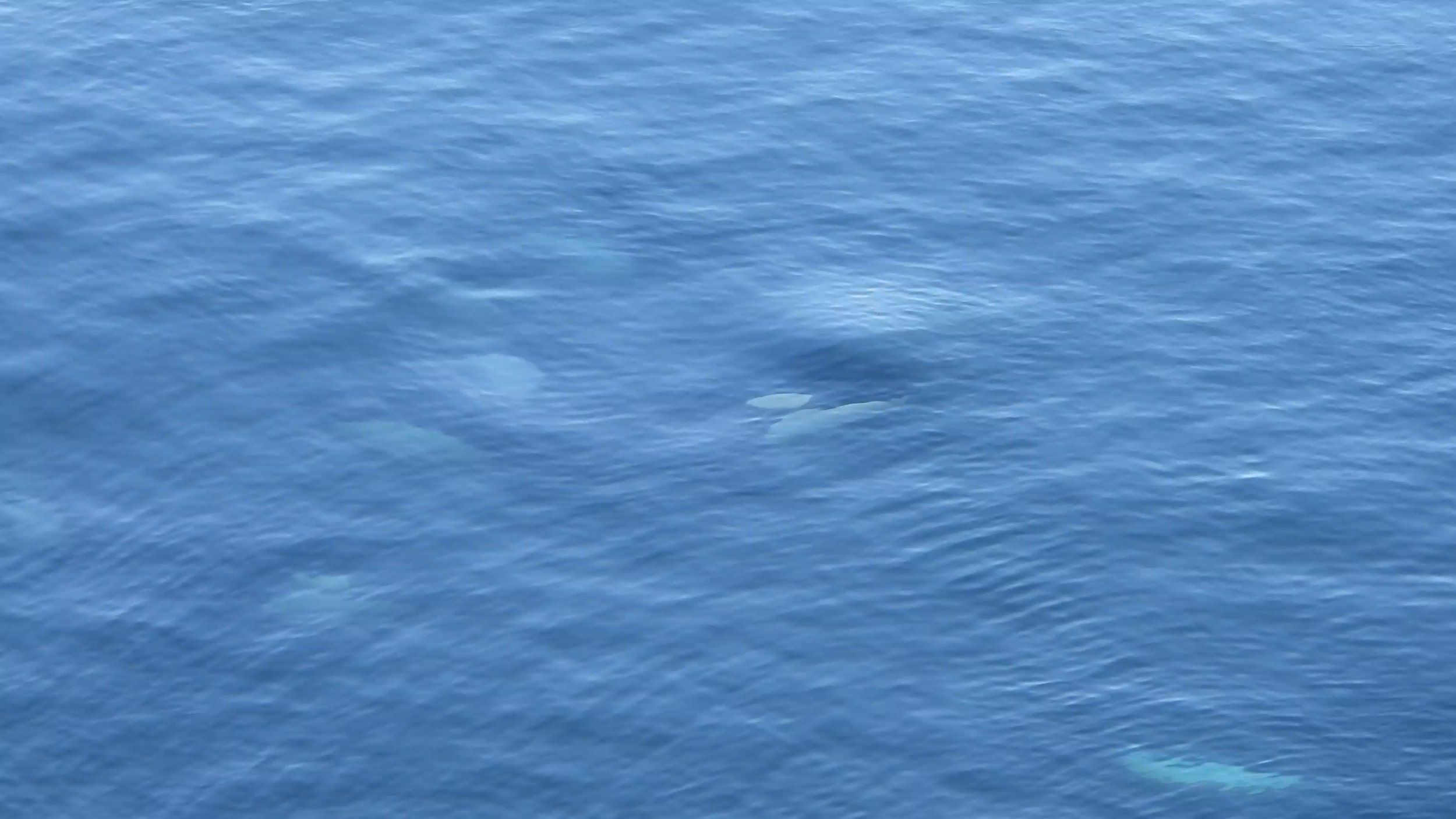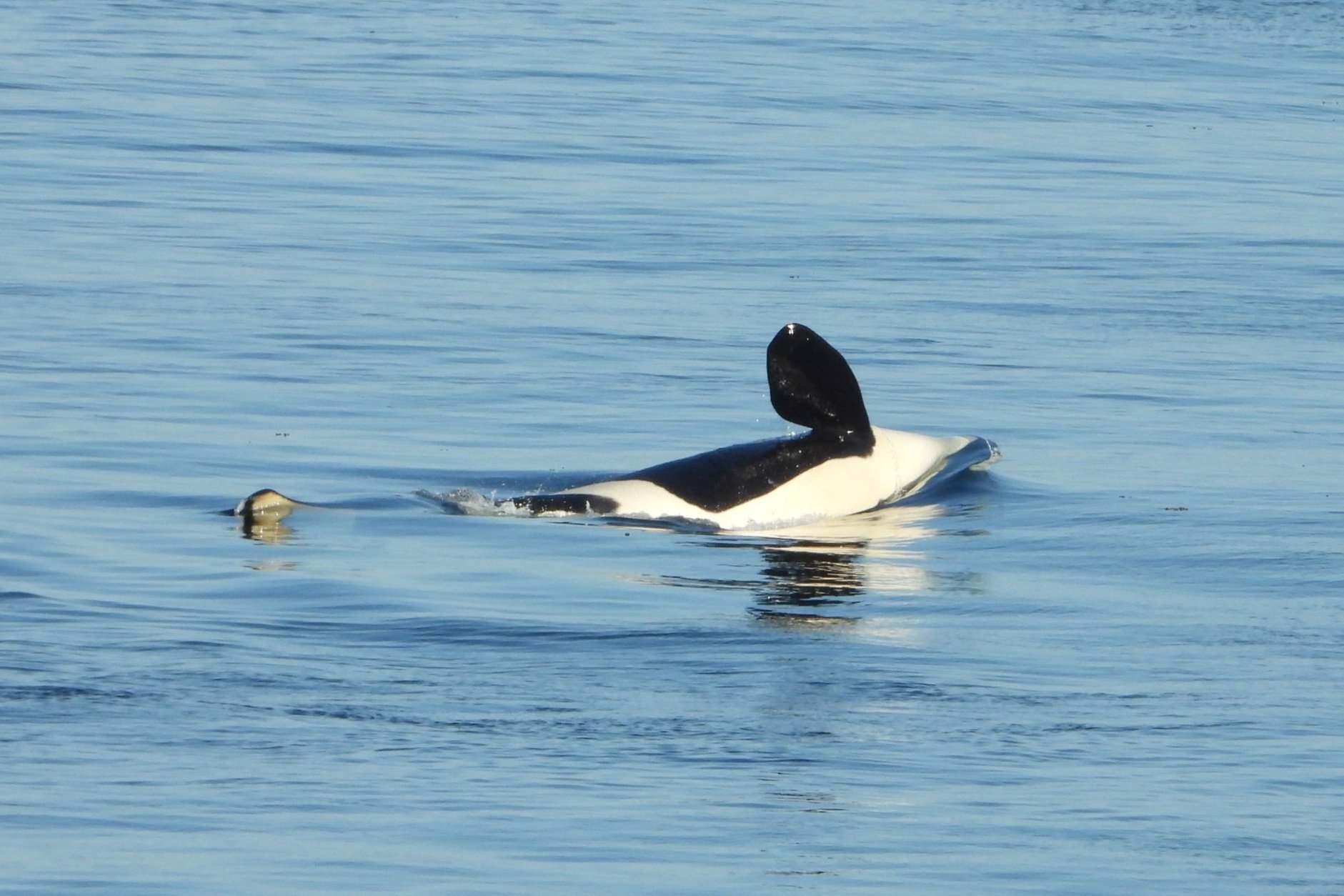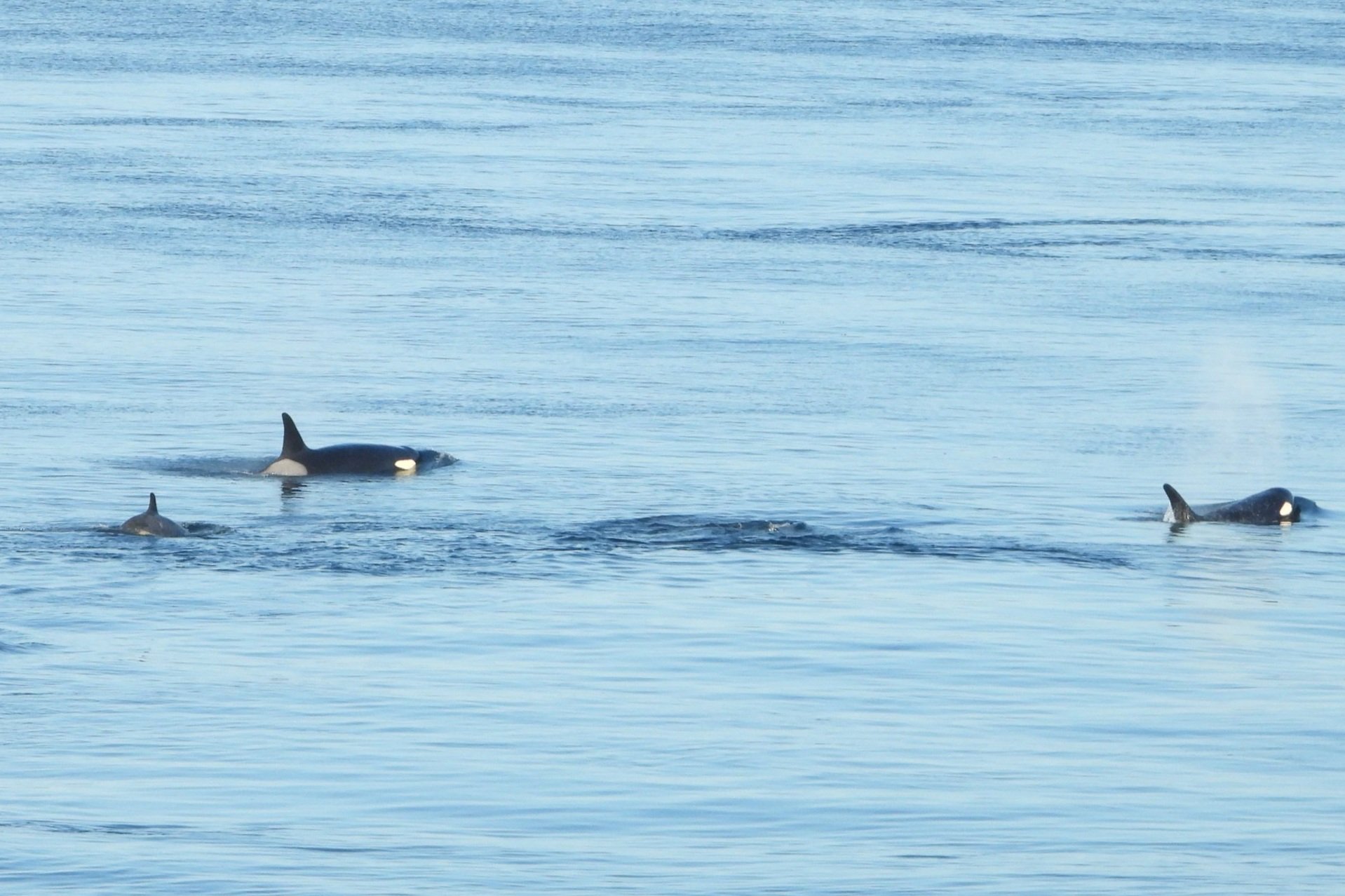July 1, 2023: J Pod & the L12s| San Juan Island, WA
Date: Saturday, July 1, 2023
Location: Landbank Westside Preserve, San Juan Island, WA
Weather: Scattered clouds, 64 degrees Fahrenheit with 12mph winds from SW
Tide: Flood
Pods: J Pod and the L12s
Total Whale Count: 36
Behaviors: Resting, socializing
Boat Count: 0
The L77s: L126, L119 Joy, L124 Whistle, and L77 Matia
This sighting was one for the record books and one that won’t soon be forgotten. We spent multiple hours viewing members of J Pod along with the subgroup of L Pod, known as the Greater L12s, or L12s, is made of the L11s, L85, L22, and L25, along with the two brand new L Pod calves, L126 and L127.
When we heard reports of Js and Ls coming in the Thursday beforehand, we thought we would take our chances and go see them if they seemed like they would still be around by saturday. With it being a holiday weekend, the only ferry we could get to Friday Harbor was the 4am ferry, so we woke up early (and when I say early I mean 1:45am wake-up time early), and that decision was well worth it!
We made it to the island at dawn, and drove straight to the west side, parking the car at Landbank Westside Preserve. Initially, we had worried that the whales had left overnight, as they were traveling south that Friday night, and were picked up on the Lime Kiln hydrophones around 1am. Upon arrival at Landbank, within less than 5 minutes of being there, we saw the first dorsal fin. And honestly, we hadn’t even started looking, we were taking the dog for a short bathroom break when we noticed a tiny little black thing going into the water. It was one of those, “Wait, did I really just see that?” kind of moments, and we waited to see a second dorsal fin before grabbing the camera equipment, while simultaneously updating the sightings reports on FB, and running down to get set up.
We started watching a group of whales to the south of us who we IDd as both members of J Pod and the L12s. In one of the clips we got, we see 2 to 3 whales doing peck slaps, in almost a “follow the leader” style. Two of the whales were especially close, appearing to mimic one another, and this included J47 Notch (m) and L113 Coustaue (m), which makes us speculate if there may have been some possible breeding.
While watching the group to the south, a group of whales surfaced quite close to us, and this group was the J19s all together with J19 Shachi, her daughter J41 Eclipse, and her two calves J51 Nova, and J58 Crescent. The J19s stayed in front of us for several minutes, slowly traveling north close to shore, then making a circle back south, repeating this a few times before committing northbound towards Lime Kiln Point State Park. In the time they were circling directly in front of us, it appeared that they were in a rest, or logging formation. What was really interesting, is that throughout the day, multiple groups of orcas repeated this circle pattern in front of us prior to committing northbound.
As the J19s left and continued north, we started watching the large group to the south of us. It appeared to be one giant cuddle puddle with multiple individuals displaying a variety of resting and social behaviors. There were individual or small groups of whales just floating at the surface at times, bobbing up and down on the waves like logs or driftwood. There was also this behavior we hadn’t seen before, whales floating with their chins sticking out of the water. In some instances, this would last for 30 or more seconds.
The next group to pass us was members of the J11s which included J27 Blackberry, his sister J31 Tsuchi, and her calf J56 Tofino. Just like the J19s, the J11s slowly passed in front, fairly close to shore circling this area several times before making a turn back south. As they circled in front of us we observed some cuddling or affectionate behaviors amongst J31 and J56 before continuing back south.
The next group to pass was all of the J16s which include J16 Slick and her three offspring J26 Mike, J36 Alki, and J42 Echo. A few days before, photogrammetry data released by SR3 indicated that J36 was in late-stage pregnancy. Like the previous group, the J16s did a slow circle in front of us and then continued on north. After the J16s had left, the J11s had once again returned in front of us this time traveling north.
We then turned back to watch the large group of Js and the L12s as they were gradually making their way closer to us and we got our first look at one of the new L calves. As we were watching them, a group of 4 orcas, which included members of the J14s and the J17s, J40 Suttles, J44 Moby, J45 Se-Yi-Chnn, and J46 Star, snuck up on us surprising us with a pass right off of the rocks, so close we could see them under the water. They followed the circle trend of the previous groups, and as they were about to leave, they made a turn back toward us, passing us several times. In one of the video clips, you can see J46 under the water as she turns her head back and appears to check us out, before turning back for a second pass. As they were heading back north again, the J11s had come back from the south and were again passing us going north.
The group of the 4 individuals J40, 44, 45, and 46, which we will refer to as the 40s (since all their ID numbers are in the 40 range), displayed a variety of fascinating behaviors, some of which we have never seen before! An interesting note is this group is all the same or close in age, with J44, J45, and J45 all born in the same year (2009) which makes them about 14 years old, while J40 was born in 2205 and is about 19 years old. After circling in front of us, they formed a semi-stationary cuddle puddle, where the four were tight together floating atop the surfacing rubbing up on one another. As they began to break formation, one of the males, presumably J45 based on the dorsal fin shape, remained in a “frozen spy hop” with his chin sticking out of the water, similar to what we had seen in the large south group.
This group remained in the area very near in front of us, and while they were logging and socializing, the rest of the J17s which included J35 Tahlequah, J47 Notch, J53 Kiki, and J57 Phoenix passed through traveling north.
At some point during the multiple groups passing, one whale made a loud vocalization above water. Unfortunately, we were not recording at the time and were not able to capture the audio. It sounded like a loud man's voice making a grunting sound. One of our friends said when she heard it she thought there was a man standing behind her when it was actually the orca she was hearing.
After the remainder of the J17s passed us, the L12s began approaching, and something so fascinating transpired right in front of us. As the J12s were approaching, the 40s group remained in a near-still logging formation as if they were frozen. J45 once again was stationary with his chin extending out of the water, while J40, J44, and J45 were logging next to one another. All four whales were tight together in this resting formation in almost complete stillness. It is a behavior we at Orca Conservancy have never seen before, and we have been calling it “the greeting log”, as it appears to be a mix of resting and greeting behaviors. We weren’t able to count how long these whales had been in this formation, but based on the clip we know it was for more than 10 seconds they were completely still, as if waiting for the L12s to approach. Once they broke formation and started to move they slowly trended south towards the oncoming L12s.
We lost track of the 40s when the L12s approached, and we got some incredible looks at the two new calves! L126 is the first calf to L119 Joy and is the niece or nephew to the calf L127, who is the third offspring born to L94 Calypso. These whales did not do a circle change of direction in front of us, but slowly passed us going north. We watched as the two calves played together, and surfaced alongside siblings, aunts, and uncles. L126 most often stayed alongside its mother, while L127 appeared to be a little more independent, popping up by itself or alongside other whales such as big sister L113 Cousteau and members outside of the L11 matriline, L25 Ocean Sun, L85 Mystery, and L22 Spirit. As the group started to make their way north of us, L22 started doing multiple tail slaps, which can be a form of communication. Going back through photos, we were able to place the 40s again, who had stalled out along with members of the J16s just south of Lime Kiln as the L12s were continuing towards them.
As the whales carried on to the north, it seemed as if they were all starting to wake up a bit more, and before passing us we saw many more tail slaps, inverted tail and pec slaps, kelp play, and a spy hop from L121 Windsong. As they approached Lime Kiln Point, there were a few breaches (all of which we missed on the camera). Once they rounded the point, we went to charge our cameras and equipment.
As we were charging, we saw reports that some of the whales had turned back south. They had already passed by where we were, but then again turned to go north again, in what is referred to as “the west side shuffle”. We gathered our things and went out again, observing a few individuals pass, further offshore. The wind and heat had picked up, degrading the quality of our content, but we did confirm L26, L85, L25, and others who passed us going north. What was interesting, is once the whales hit a specific point, they began roostertailing and sharking, showing a good amount of speed. We suspect this could have been travel or perhaps hunting behaviors. After this last pass, the whales continued north, and we eventually caught the ferry back to the mainland, though we do know the whales came back during the sunset hours and remained in the area until July 5th when they were sighted exiting in the Strait of Juan de Fuca to the outer coast.
Both J and L pods are members of the critically endangered killer whale population, with now 75 total members (counting the two new L Pod calves).
J Pod consists of 6 matrilines and 25 individual whales.
The L12 subgroup consists of the L11 matriline (with the two new calves) as well as the individuals L22, L25, and L85.
Learn more about J Pod, and L Pod on our Meet the Southern Resident Page.























